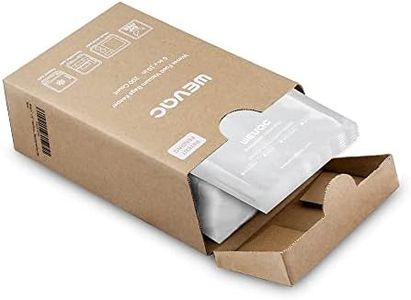We Use CookiesWe use cookies to enhance the security, performance,
functionality and for analytical and promotional activities. By continuing to browse this site you
are agreeing to our privacy policy
10 Best Vacuum Sealer Bags
From leading brands and best sellers available on the web.Buying Guide for the Best Vacuum Sealer Bags
Choosing the right vacuum sealer bags is essential for effective food storage, keeping your food fresh, and ensuring your vacuum sealer works efficiently. Not all bags are created equal, and picking the right one depends on what you plan to store, how long you intend to keep it, and which vacuum sealer you use. Understanding the main features of vacuum sealer bags will help you make a practical choice that fits your kitchen and storage needs.Material TypeMaterial type refers to what the vacuum sealer bag is made from, typically combinations of plastic like polyethylene and nylon. This spec matters because different materials provide varying levels of strength, puncture resistance, and barrier to air and moisture. Some bags are multi-layered for better protection; these are more durable and suitable for long-term storage, like freezing meats or sous vide cooking. Basic, thinner bags may be fine for short-term storage of dry foods. If you're planning to freeze foods for several months or cook vacuum-sealed food in water baths, choose multi-layered, heavy-duty materials. For occasional or short-term use, single-layer or economy bags may be enough.
Bag ThicknessBag thickness usually measured in mils (thousandths of an inch), determines the strength and protective ability of the bag. Thicker bags (around 4-5 mils) are tougher and offer more protection against punctures and freezer burn, which is good for storing sharp or heavy items and long-term freezing. Medium-thickness bags (about 3 mils) are balanced for everyday food storage. Thinner bags (under 3 mils) are lighter, cheaper, and best for short-term or dry goods storage. Choose based on whether you’re packing tough, bulky, or sharp food items (go thicker), or simply storing grains or snacks (lighter is fine).
Bag SizeThe size of the bag affects what and how much you can store in it. Vacuum sealer bags come in a variety of sizes, ranging from small (quart or pint) to large gallon bags, as well as rolls you can cut to any length. Using the right size matters because too large a bag wastes material, and too small a bag won’t fit your items. Consider what you mainly store (individual portions, large cuts of meat, or vegetables), and choose a size or roll width that matches your regular needs. Rolls offer flexibility if your needs vary a lot.
Texture (Embossed vs. Smooth)Texture refers to whether the bag surface is smooth or has an embossed pattern. Embossed or textured bags have small channels that help the air escape easily during vacuuming, making them compatible with most external suction vacuum sealers. Smooth bags may be required for chamber vacuum sealers but may not work well with standard (external) machines. If you have a typical countertop vacuum sealer, opt for textured bags. If you use a chamber vacuum sealer, smooth bags are fine. Always check what your sealer needs.
CompatibilityCompatibility means whether the vacuum sealer bags can work with your particular vacuum sealer model. Some sealers only accept certain types or brands of bags, while others can use almost any third-party bag. Always check if the bag or roll packaging mentions compatibility with your style of vacuum sealer—whether it’s a chamber, external suction, or handheld. Picking the wrong type could result in poor seals or failed vacuuming. If unsure, look for universal bags designed to fit most sealers.
Food Safety and BPA-FreeFood safety refers to whether the bags are safe for storing food, specifically that they do not contain harmful chemicals like BPA. Bags labeled 'BPA-free' ensure they won't leach dangerous substances into your food during storage or heating. For anyone storing food long-term or cooking sous vide, it’s especially important to pick food-grade, BPA-free bags. Always check that the bags are marked as safe for food contact and suitable for freezing, microwaving, or boiling if you plan to use them that way.
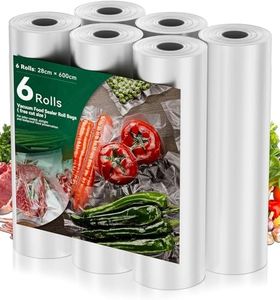
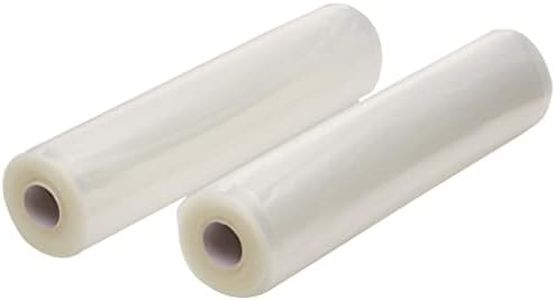
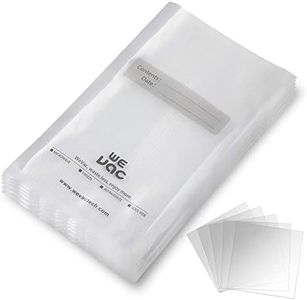
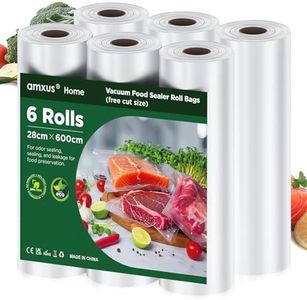
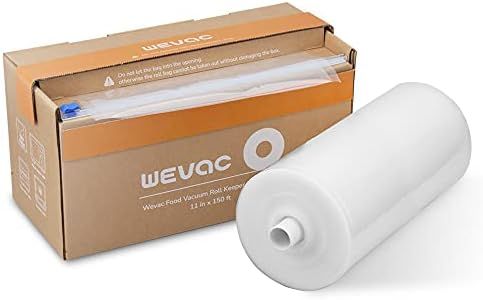
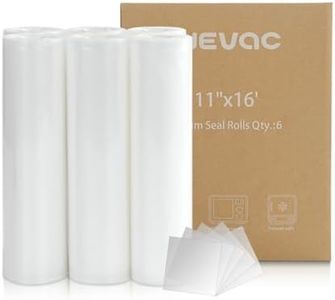
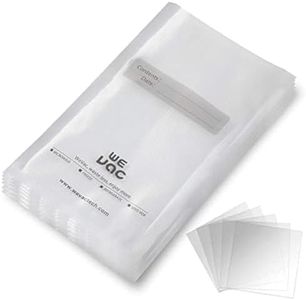
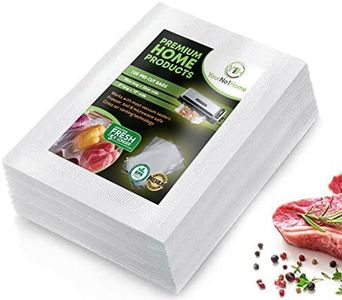
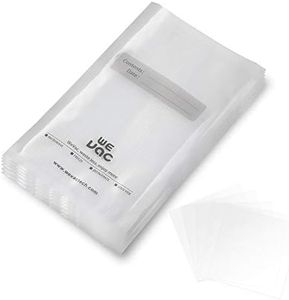
![[2024 New] 28cm x 45m Food Vacuum Seal Roll Keeper with Cutter, Ideal Vacuum Sealer Bags for Food Saver, BPA Free, Great for Storage, Meal prep and Sous Vide Wevac Lite](https://images-proxy.bestreviews.guide/fTqSJEMT65S3joUyU5G73mkqJZU=/0x300/https://m.media-amazon.com/images/I/31nY3lNFUsL._AC_CX679_.jpg)
![[2024 New]](https://images-proxy.bestreviews.guide/98bxDuIo-y3QEkRJIBYrfagccxM=/0x300/https://m.media-amazon.com/images/I/31iPIrrZkBL._AC_CX679_.jpg)

